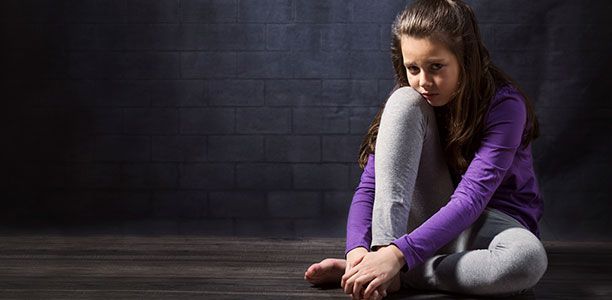Did you know that 21-42% of women and 10-16% of men have experienced child sexual abuse? Sexual abuse has lasting detrimental effects on victims, their families and society as a whole.
To date, the prevention of sexual abuse has mostly rested with the victims. Millions of dollars has been invested in the education of children, mainly through school-based programs – giving children the knowledge and skills to evade the sexual advances of adults and to disclose past or ongoing abuse. Governments, community organisations and the general public have supported such interventions over the last 30 years despite there being no evidence to show that such an approach works and does not cause unintended side-effects for children.
Griffith University researchers are attempting to shift the focus of prevention from children to adults, namely parents, as protectors of children. Professor Melanie Zimmer-Gembeck and Julia Rudolph believe that protecting children from sexual abuse goes beyond parents talking to their children about the dangers of abuse to include parenting practices and parental knowledge of offender tactics. Research on sexual abuse risk factors shows that proactive, involved and warm parenting, with appropriate levels of monitoring can be protective. And research on offender tactics offers numerous opportunities for parents to intervene in risky situations.
What is needed to shift the focus of prevention is more research with parents about how they protect their children, how they feel about sexual abuse prevention, how they think their children should be protected and what they know about sexual abuse. Griffith University is currently recruiting participants for this important study. They need volunteers who are parents of children aged 6-11 to fill out an online, completely anonymous survey. All participants go in the draw to win one of three $100 Coles/Myer gift vouchers!
If you would like to participate please follow the link, complete the survey and follow the instructions to go in the prize draw.
https://www.surveymonkey.com/r/parentsap6-11
For more information please contact:
Julia Rudolph: Julia.rudolph@griffithuni.edu.au
This study has approval from the Griffith University Human Research Ethics Committee (2015/861).
References
- Dunne, M. P., Purdie, D. M., Cook, M. D., Boyle, F. M., & Najman, J. M. (2003). Is child sexual abuse declining? Evidence from a population-based survey of men and women in Australia. Child abuse & neglect, 27(2), 141-152.
- Mamun, A. A., Lawlor, D. A., O’Callaghan, M. J., Bor, W., Williams, G. M., & Najman, J. M. (2007). Does childhood sexual abuse predict young adult’s BMI? A birth cohort study. Obesity, 15(8), 2103-2110.
- Mazza, D., Dennerstein, L., Garamszegi, C. V., & Dudley, E. C. (2001). The physical, sexual and emotional violence history of middle-aged women: A community-based prevalence study. Medical Journal of Australia, 175(4), 199-201.
- Moore, E., Romaniuk, H., Olsson, C., & Jayasinghe, Y. (2010). The prevalence of childhood sexual abuse and adolescent unwanted sexual contact among boys and girls living in Victoria, Australia. Child Abuse and Neglect, 23(5), 379-385.
- Najman, J. M., Dunne, M. P., Purdie, D. M., Boyle, F. M., & Coxeter, P. D. (2005). Sexual abuse in childhood and sexual dysfunction in adulthood: An Australian population-based study. Archives of Sexual Behavior, 34(5), 517-526.
- Finkelhor, D., & Dziuba-Leatherman, J. (1995). Victimization prevention programs: A national survey of children’s exposure and reactions. Child Abuse & Neglect, 19(2), 129-139. doi:10.1016/0145-2134(94)00111-7
- Ko, S. F., & Cosden, M. A. (2001). Do elementary school‐based child abuse prevention programs work? A high school follow‐up. Psychology in the Schools, 38(1), 57-66. doi:10.1002/1520-6807(200101)38:1<57::AID-PITS6>3.0.CO;2-W
- Pelcovitz, D., Adler, N. A., Kaplan, S., Packman, L., & Krieger, R. (1992). The failure of a school-based child sexual abuse prevention program. Journal of the American Academy of Child & Adolescent Psychiatry, 31(5), 887-892. doi:10.1097/00004583-199209000-00017
- Topping, K. J., & Barron, I. G. (2009). School-based child sexual abuse prevention programs: A review of effectiveness. Review of Educational Research, 79(1), 431-463. doi:10.3102/0034654308325582










